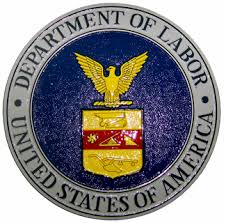Week in Review
A new potent bullish stimulus arose late last week which helped propel the stock markets to new historic highs. For example, the Dow Jones Industrial Average soared above its key 17,000 handle for the very first time. Similarly, the S&P500 recorded an inspiring performance by posting new consecutive peaks for the third successive day in a row while the NASDAQ climbed for the third sequential week to register its highest closing value since the beginning of the 2000s. Consequently, the foremost US indices finished a shortened week on a strong note characterized by the Dow Jones Industrial Average climbing upwards by just over ninety points; the S&P500 creeping higher by almost 11 points while the NASDAQ rose by 28 points.
The USA is certainly now countering the economic anguishes it endured during the first quarter of 2014, which were subsequently blamed on a particularly difficult winter in North America. The US Department of Labor published its keenly anticipated monthly report revealing that US businesses generated 288,000 new jobs last month. This outcome easily exceeded the market’s expectations of 212,000 encouraging traders to substantially bolster their risk exposure. Another key indicator disclosed that the US unemployment rate dropped to 6.1% registering its lowest value since the early autumn of 2008.
Investors were undoubtedly impressed by these promising figures which added further strength to the conviction that the US economy was definitely now emerging from the doldrums. Consequently, stocks rocketed upwards although excessive gains were restricted by growing conjecture that the US Federal Reserve may now be tempted to implement an interest rate hike quicker than expected in response to this strong labor report. Prominent economists summarized the ramifications of last week’s developments by advising that an improving US employment market was certainly the catalyst needed to propel stocks upwards. They also stated that this report explicitly refuted escalating speculation that equities were now overvalued and ready for correction.
The European stock markets completed last week by finishing slightly in the red as investors continued to evaluate the impacts of new policy decisions issued by the European Central Bank last Thursday. Mario Draghi, the ECB President, assertively stated that the ECB was now prepared to print money, if required, in order to boost the flagging European economic recovery. Consequently, analysts were urgently and meticulously studying the fine print of the new loan proposals presented by the ECB last week in order to determine if they really can bolster borrowing to European consumers and businesses.
What to Expect This Week
A spate of important economic indicators will be published during the course of the next few days.
The Eurozone will launch the week by presenting its Industrial Production figure on Monday. Analysts are hoping that the economic powerhouse of Europe, Germany, can provide evidence of an improving status by posting a strong number. Later in the session, Canada will issue a key business outlook survey which could have a strong influence on the next interest rate policy instigated by the Bank of Canada.
On Tuesday, both France and Germany will disclose their Merchandise trade results which represent the differences between exports and imports of tangible services and products. Again, investors will be keen to detect any signs that the economy of the Eurozone is gathering bullish momentum. Shortly afterwards, Great Britain will reveal its Industrial Production report for last month, which is expected to demonstrate an improvement over May’s result of 0.4%
Canada will announce its important House Starts on Wednesday which quantifies the construction of new residences started in June. A value greater than 198,324 is needed to bolster fresh investor confidence. The week’s pivotal event will then occur during Wednesday afternoon, EST, when the minutes from the latest meeting of the Federal Open Market Committee will be published. Analysts will scour this document carefully for any clues about when the Fed will most likely instigate an interest rate hike. Australia will complete the day by posting its key Labor Force Survey. The national unemployment rate is expected to decline below the previous month’s reading of 5.8%.
France will release its Industrial Production result for June on Thursday which must report a rise above May’s 0.3% value in order to inspire market confidence. The Bank of England will then announce its interest rate policy decision shortly afterwards. A verdict of ‘no change’ is widely forecasted by the majority of analysts. Subsequently, the US Department of Labor will issue its weekly report advising just how many Americans filed first claims for unemployment benefits during the preceding week. Investor confidence will release a boost if the figure produced is lower that the prevalent prediction of 315,000.
On Friday, Germany will declare its Consumer Price Index which is an important measure of inflationary forces. Analysts are currently predicting a slight improvement during June compared to May’s reading of 0.3%. Canada will subsequently complete the week by presenting its labor report for June. Employers are expected to have created just over 25,000 new jobs last month while the Unemployment Rate should slip beneath the previous month’s reading of 7%.




